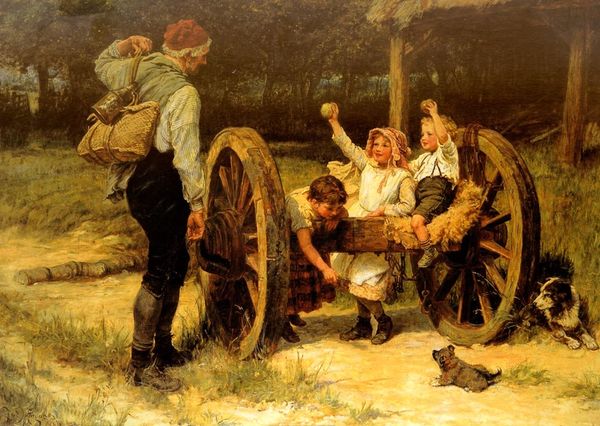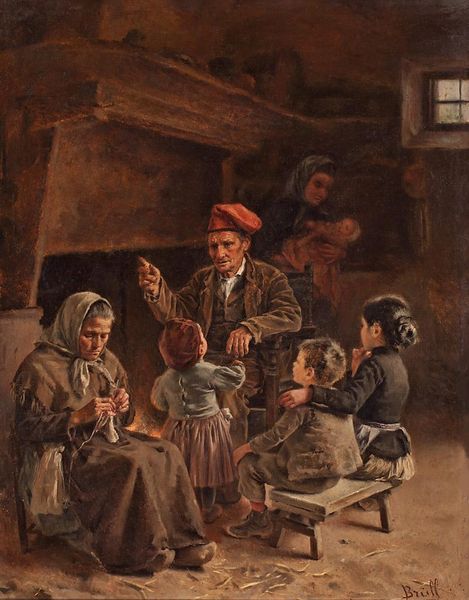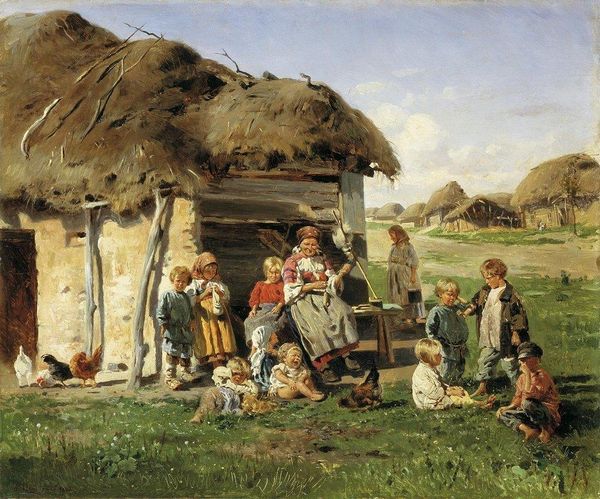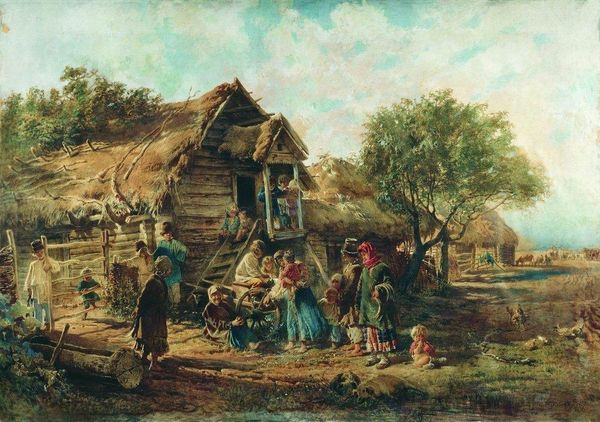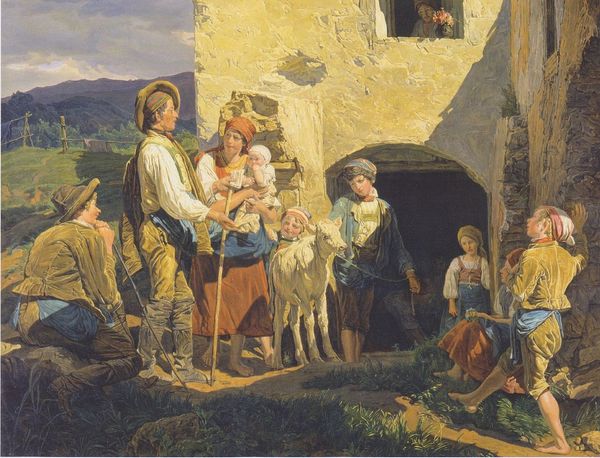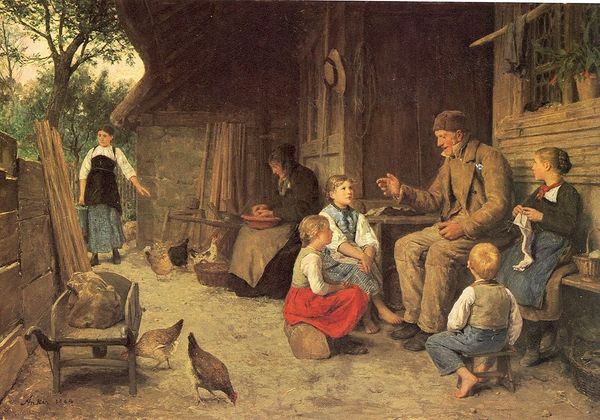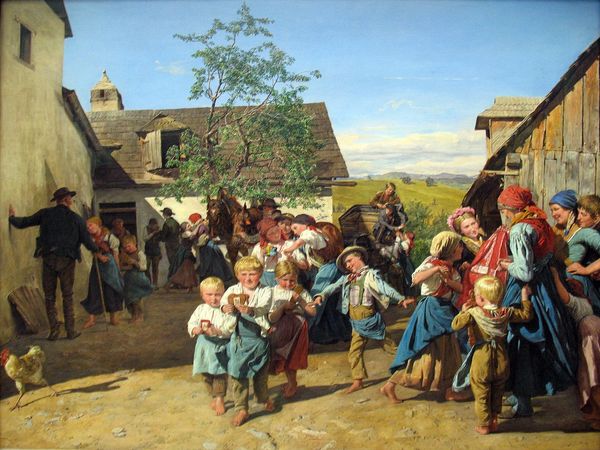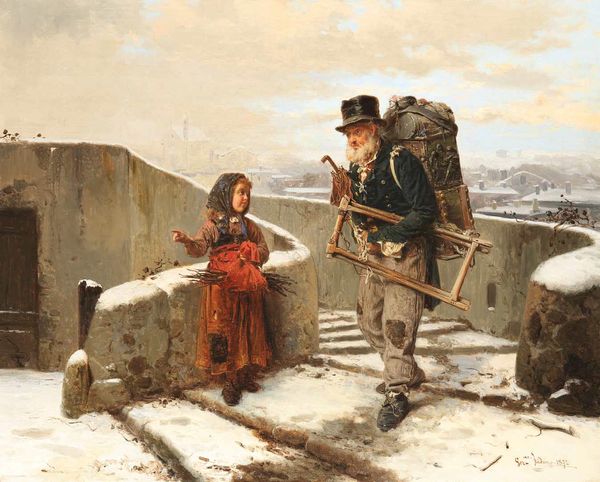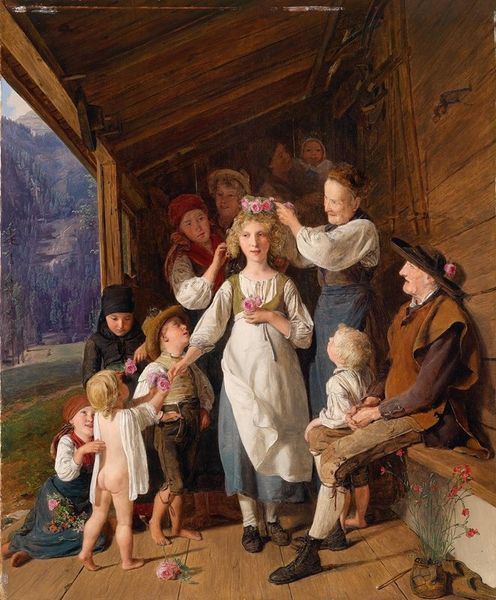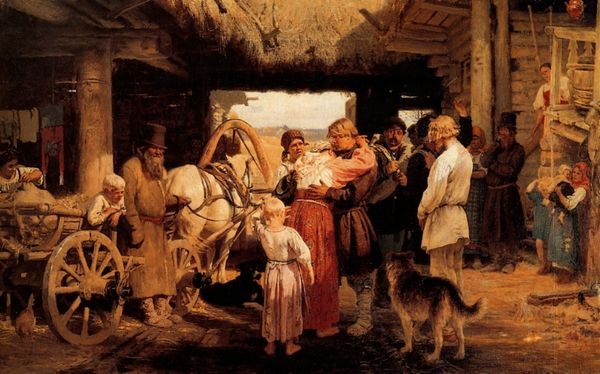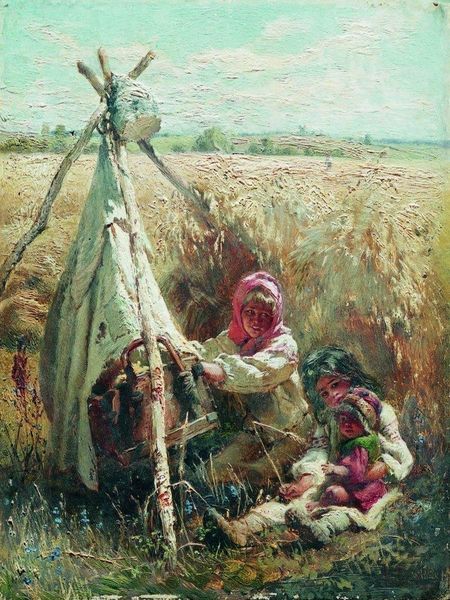
Copyright: Public domain
Editor: Here we have "The Market Wagon," an oil painting by Ralph Hedley, completed in 1906. It strikes me as a rather sentimental portrayal of rural life. What do you see in this piece? Curator: For me, this image presents an interesting view of the socio-economic structures of early 20th-century England. It idealizes a scene of commerce. Note how Hedley frames this small market transaction as a gentle exchange, softened by the children feeding the calf, thus omitting the harsher realities that came with rural labor and animal husbandry at that time. Editor: I see what you mean. The painting romanticizes a lifestyle but also subtly emphasizes social class distinctions by showing children engaged with work in a family owned wagon. Curator: Precisely. How does the composition of the wagon, acting almost like a stage, affect how you understand the people within the frame? Hedley purposefully shows the family on display selling a product. What point is he making about their place in society through this form of artistic representation? Editor: The elevated display does almost place the figures like characters in a play, drawing us in while simultaneously distancing us because they're placed so high. We see their faces and interaction. Almost like looking in at an ideal. Curator: Right. It positions the viewer as an outsider looking in. It makes you wonder about who Hedley painted this scene for. What was his intended audience? Was it someone familiar with rural life or a member of a different class, an urban consumer removed from the sources of their provisions? It challenges the narrative on who this work caters to! Editor: That makes me see the painting in a new way. I hadn’t considered how the artist might have been addressing a specific audience or even making a statement about the different levels in British society. Curator: Understanding this artwork’s potential audiences illuminates the social dynamics of its time, and it exposes a need to unpack imagery more broadly than just aesthetic or purely “art for art's sake”.
Comments
No comments
Be the first to comment and join the conversation on the ultimate creative platform.
